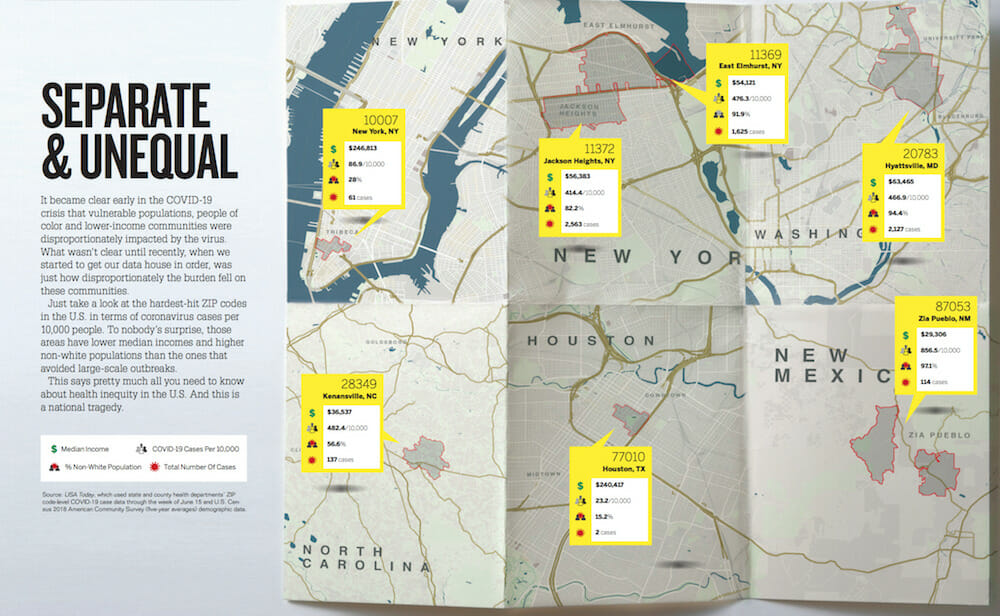It became clear early in the COVID-19 crisis that vulnerable populations, people of color and lower-income communities were disproportionately impacted by the virus. What wasn’t clear until recently, when we started to get our data house in order, was just how disproportionately the burden fell on these communities.
Just take a look at the hardest-hit ZIP codes in the U.S. in terms of coronavirus cases per 10,000 people. To nobody’s surprise, those areas have lower median incomes and higher non-white populations than the ones that avoided large-scale outbreaks.
This says pretty much all you need to know about health inequity in the U.S. And this is a national tragedy.
Source: USA Today, which used state and county health departments’ ZIP code-level COVID-19 case data through the week of June 15 and U.S. Census 2018 American Community Survey (five-year averages) demographic data. *Click to enlarge the image

From the August 01, 2020 Issue of MM+M - Medical Marketing and Media






